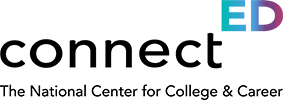Dr. Hoachlander is the President of ConnectED: The National Center for College and Career. ConnectED is a nonprofit organization that uses the Linked Learning approach to partner with school, district, and community leaders to transform how students learn, schools teach, and communities engage.
Nationwide, schools—from K-12 all the way through postsecondary institutions—are shuttering their doors. Government officials predict that schools are likely to remain closed for the next three to six months, through summer break. As parents, teachers, and students absorb the shocks and challenges of this new reality, many are wrestling with whether and how to sustain learning and teaching during these tumultuous times. In most respects, this is unprecedented. But in some respects, it is not.
Flashback fifty years ago to the spring of 1970, when the Vietnam War and the turmoil that was traumatizing our country was at its peak. College campuses—including Columbia University, Kent State, and the University of California, Berkeley, to name just a few—were struggling with violence and unrest unknown in our nation’s history.
Most college campuses chose to shut down for the remainder of the academic year. But Princeton University, where I was in my senior year, did something different.
Under the leadership of President Robert Goheen, one of the nation’s most thoughtful and courageous college presidents, Princeton elected to remain open. Princeton canceled all classes and assured every student of receiving a “pass” in all of the classes in which they were enrolled. In return, President Goheen asked all students and faculty to devote the remainder of the semester to analyzing and reflecting on the war—to engage in honest, ideologically diverse, data-driven, and deeply personal assessments of why we were at war in Vietnam and how we should move forward. This was an exercise not in reaching a common perspective, but in the value of inquiry.
In a moment of crisis, instead of shutting down, we opened up to new ways of thinking and learning. Today, we have the opportunity to do something similar.
In this instance, schools of course must close physically, but they can remain open to new ways of learning. We can engage students of all ages—teachers, parents, employers, and community stakeholders—in discussing, analyzing, proposing, and debating solutions to one of the most challenging crises in our lifetimes. Instead of just struggling to figure out how to carry on with business as usual, what if we asked: How can we best take advantage of this unprecedented teachable moment?
When more and more schools across the country are seeking to engage in multi-disciplinary project-based learning, here is a topic with limitless opportunity. In math, how do we model the spread of local, regional, national, and global infection? In science, what do we know about the underlying biological, chemical, and physical attributes of viruses and related diseases? In history, what can we learn from how localities and nations reacted to similar pandemics in the past? In English Language Arts, as well as the visual and performing arts, how did authors and artists capture the pathos of the time? And in technical courses, how are practitioners seeking to address the challenges of the outbreaks, and how can we become ever better prepared to anticipate, understand, and solve these problems in the future?
Without question, today we face a crisis. Many schools and districts are responding with compassion, urgency, and grace—but also in ways that miss the incredible opportunity we have before us to make learning real, relevant, and rigorous. As educators, will we keep the proverbial classroom doors closed by deciding to focus on testing and personalized learning plans, or will we break through to engage as a community of learners—including, most of all, our students, whose futures will be deeply affected by how we respond?
This is a teachable moment. Let’s be sure we all learn from it.
)